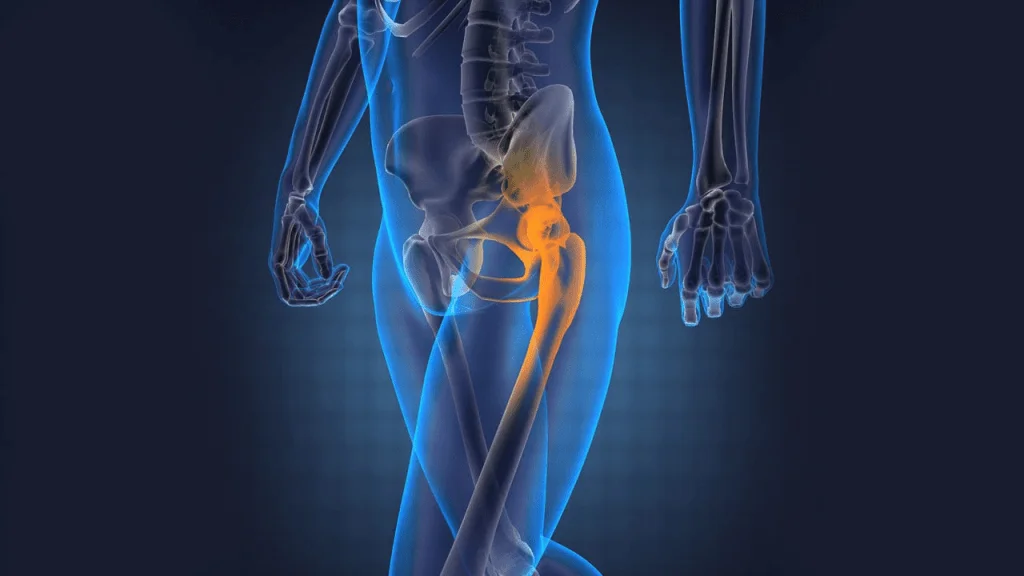Hip Joint In Nagpur

Hip Joint In Nagpur
The Anatomy of the Hip Joint
The hip joint consists of two main components:
- The Femoral Head: The rounded top of the thigh bone that fits into the pelvis.
- The Acetabulum: The socket in the pelvis that holds the femoral head, forming the ball-and-socket structure.
Both parts are covered by cartilage, a smooth tissue that helps the bones move freely against each other without friction. Ligaments and muscles surrounding the joint provide additional support and stability.
Common Hip Joint Problems and Conditions
As a weight-bearing joint, the hip joint is prone to various injuries and conditions. Some of the most common issues include:
Osteoarthritis: A degenerative joint disease that wears away the cartilage, causing pain, stiffness, and reduced mobility. It’s one of the most common causes of chronic hip pain, especially in older adults.
Hip Fractures: A break in the femur or pelvis due to trauma or bone weakness. Hip fractures often occur in older individuals, particularly those with osteoporosis.
Bursitis: Inflammation of the bursae (fluid-filled sacs that cushion the joint), which can lead to pain and swelling in the hip.
Hip Labral Tears: A tear in the cartilage (labrum) that surrounds the hip joint socket. This condition can cause pain, instability, and clicking sensations.
Tendinitis: Inflammation of the tendons around the hip joint, leading to pain and discomfort during movement.
Hip Dysplasia: A condition where the acetabulum is too shallow, leading to instability and wear over time. It’s often present from birth and can develop into arthritis later in life.
Signs and Symptoms of Hip Joint Issues
If you’re experiencing discomfort or pain in your hip joint, it’s important to recognize the symptoms. Common signs include:
- Persistent pain in the hip, groin, or outer thigh
- Difficulty walking or moving the leg
- Stiffness and limited range of motion
- Swelling or warmth around the joint
- A clicking or popping sensation when moving the hip
Treatment Options for Hip Joint Pain
There are several treatment options available for managing hip joint pain, ranging from conservative methods to surgical intervention, depending on the severity of the condition.
Non-Surgical Treatments:
- Physical Therapy: Strengthening the muscles around the hip joint can improve stability and reduce pain.
- Medications: Anti-inflammatory medications or pain relievers can help manage discomfort and swelling.
- Injections: Corticosteroid or hyaluronic acid injections can reduce inflammation and provide temporary pain relief.
- Lifestyle Modifications: Weight management, low-impact exercises, and avoiding activities that stress the hip joint can help prevent further damage.
Surgical Treatments:
- Hip Arthroscopy: A minimally invasive procedure that allows surgeons to remove damaged tissue or repair tears in the labrum or cartilage.
- Hip Replacement Surgery: In cases of severe arthritis or hip joint deterioration, total or partial hip replacement may be recommended. During this surgery, the damaged joint is replaced with an artificial implant.
- Hip Resurfacing: A less invasive alternative to total hip replacement, where only the damaged surface of the femoral head is replaced.
Preventing Hip Joint Issues
Taking proactive steps to maintain the health of your hip joint can help prevent future problems. Here are some key prevention tips:
- Exercise Regularly: Engage in low-impact activities like swimming or cycling to keep the hip joint mobile and strengthen the surrounding muscles.
- Maintain a Healthy Weight: Excess weight can place added stress on the hip joint, contributing to wear and tear over time.
- Stretch and Strengthen: Incorporate stretches and strength exercises that target the hip flexors, glutes, and thighs to promote joint health.
- Use Proper Posture: Avoid sitting or standing for long periods in positions that strain your hips, and always use ergonomic support when possible.
